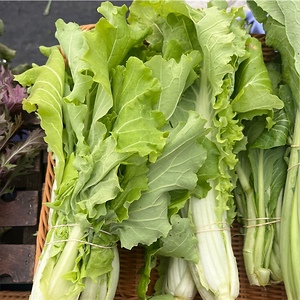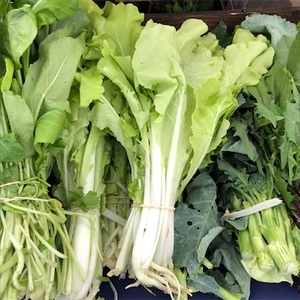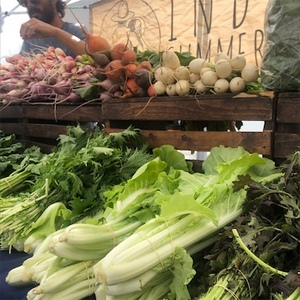


Tokyo Bekana Cabbage
Estimated Inventory, ea : 0
Description/Taste
Tokyo Bekana is a loose-headed, lightweight cabbage that is often mistaken for lettuce due to its similarities in flavor and appearance. The large leaves have a frilly consistency with ruffled edges and are green with prominent white veins spanning across the surface. Connected to the leaves, the narrow white stems are smooth, crunchy, and juicy, widening at the base. Tokyo Bekana is crisp and tender with a mild, sweet, and spinach-like flavor with mild pepper nuances.
Seasons/Availability
Tokyo Bekana cabbage is available year-round.
Current Facts
Tokyo Bekana, botanically classified as Brassica rapa var. chinensis 'Tokyo Bekana,' is a distinct, loose-heading heirloom variety of Chinese cabbage that is native to Japan. Also known as Small Chinese cabbage, Tokyo Bekana is a fast-growing variety that can be harvested at multiple stages of maturity, including microgreen, baby leaf, petite leaf, and at full size. Tokyo Bekana cabbage is a cut-and-come-again variety, providing several crops throughout the season, and is favored for its mild flavor and delicate texture.
Nutritional Value
Tokyo Bekana is an excellent source of fiber that can help aid in digestion and contains vitamins A, C, and K to help protect the body from environmental damage. It also contains some magnesium, calcium, iron, and folate.
Applications
Tokyo Bekana cabbage is best suited for both raw and cooked applications such as sautéing, steaming, and stir-frying. The frilly green is mild, lacking in traditional cabbage flavors, and can be shredded and tossed into green salads, mixed into pasta dishes for added crispness, braised as a side dish, or sliced and added to soups. Tokyo Bekana cabbage can also be lightly stir-fried and mixed with cooked vegetables and meat, used as a lettuce wrap, or pickled into a sweet and spicy condiment. Tokyo Bekana cabbage pairs well with mushrooms, fennel, tomatoes, cucumber, avocado, potatoes, onions, ginger, garlic, herbs such as thyme, basil, and mint, parmesan cheese, cherries, grapefruit, and peaches. The cabbage will keep up to one week when stored in a plastic bag in the crisper drawer of the refrigerator.
Ethnic/Cultural Info
Tokyo Bekana cabbage is being trialed and grown on the International Space Station as part of the Veg-03 experiment. Learning how to grow vegetables in space for extended space missions, Nasa is using specialized growth chambers with LED lights to allow astronauts to cultivate their own food to obtain fresh ingredients with high nutritional properties. Tokyo Bekana cabbage is being tested for further space cultivation because it is a fast-growing variety and has earned the nickname of “space cabbage.” Tokyo Bekana can also be harvested at any stage in maturity and has successfully been grown alongside red romaine lettuce and mizuna in space.
Geography/History
Tokyo Bekana cabbage is believed to be a descendent of Chinese loose-heading cabbages. Introduced from China in the 20th century, Chinese cabbages were first brought into Japan from soldiers in the Post Russo-Japanese war returning home. Through extensive cultivation and selection, Tokyo Bekana was created from these introduced cabbages and is still grown heavily in rural Japan today. Tokyo Bekana is also grown in farming communities throughout the western hemisphere and can be found at specialty grocers and local markets in Asia, Southeast Asia, Europe, and the United States.











